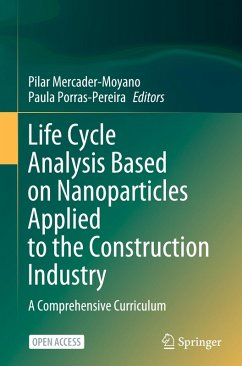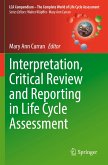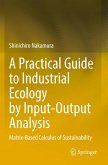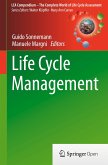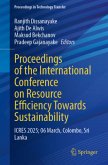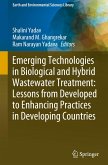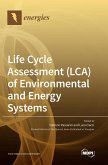This open access book describes in the recent years, there has been a notable upsurge in the use of nanomaterials, particularly within the construction and building sectors. The incorporation of nanoparticles introduces noteworthy changes in the physico-mechanical and physical-chemical characteristics of construction materials.
Despite the acknowledged advantages of employing nanomaterials, uncertainties persist regarding their widespread adoption in development and applications, especially concerning potential environmental and human health implications. A crucial aspect in thoroughly assessing the environmental impacts of nanoproducts is the imperative quantification of effects on ecosystems and human health throughout the entire life cycle of these products. The indispensable utilization of a comprehensive tool, such as Life Cycle Assessment, becomes paramount in gaining a nuanced understanding of potential environmental and health challenges, thereby ensuring the environmental sustainability of nanomaterials.
This academic publication endeavours to provide nanoproduct manufacturers, construction industry professionals, and waste managers with the necessary knowledge to comprehend the environmental and health impacts associated with the manufacturing, application, and disposal processes of nanoproducts used in the construction industry. This contribution aims to enhance their personal and professional development, consequently bolstering their employability at the European level.
A thorough comprehension of potential releases throughout the entire life cycle of nanoproducts and their potential effects is imperative for ensuring the safe and sustainable utilization of these innovative materials. The application of life cycle thinking emerges as a pivotal component in appropriately evaluating the potential impacts associated with nanomaterial releases.
Despite the acknowledged advantages of employing nanomaterials, uncertainties persist regarding their widespread adoption in development and applications, especially concerning potential environmental and human health implications. A crucial aspect in thoroughly assessing the environmental impacts of nanoproducts is the imperative quantification of effects on ecosystems and human health throughout the entire life cycle of these products. The indispensable utilization of a comprehensive tool, such as Life Cycle Assessment, becomes paramount in gaining a nuanced understanding of potential environmental and health challenges, thereby ensuring the environmental sustainability of nanomaterials.
This academic publication endeavours to provide nanoproduct manufacturers, construction industry professionals, and waste managers with the necessary knowledge to comprehend the environmental and health impacts associated with the manufacturing, application, and disposal processes of nanoproducts used in the construction industry. This contribution aims to enhance their personal and professional development, consequently bolstering their employability at the European level.
A thorough comprehension of potential releases throughout the entire life cycle of nanoproducts and their potential effects is imperative for ensuring the safe and sustainable utilization of these innovative materials. The application of life cycle thinking emerges as a pivotal component in appropriately evaluating the potential impacts associated with nanomaterial releases.

